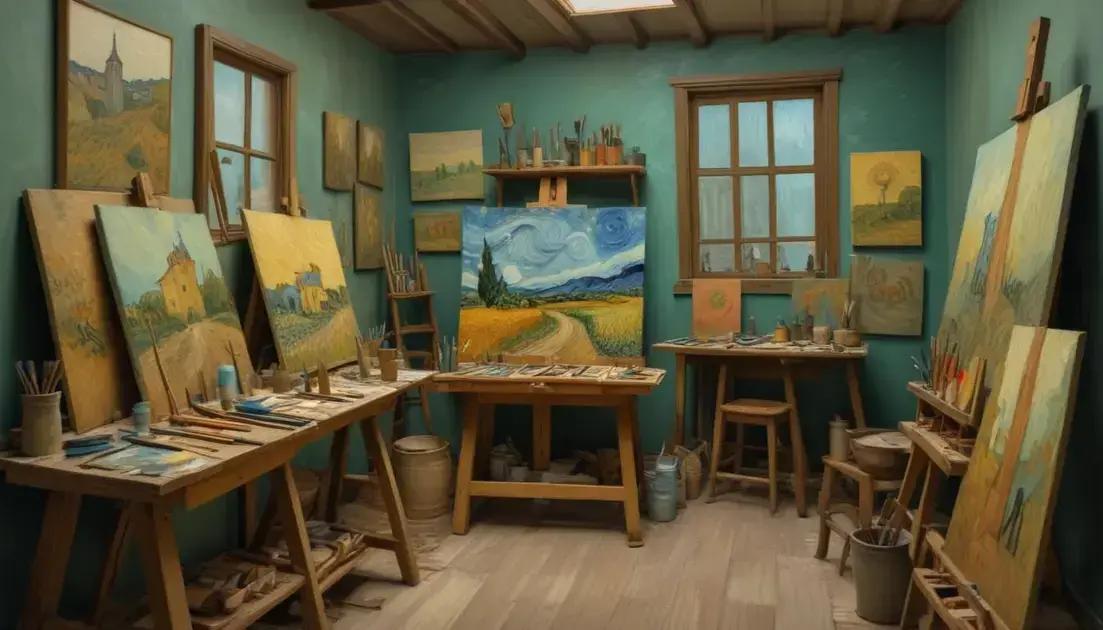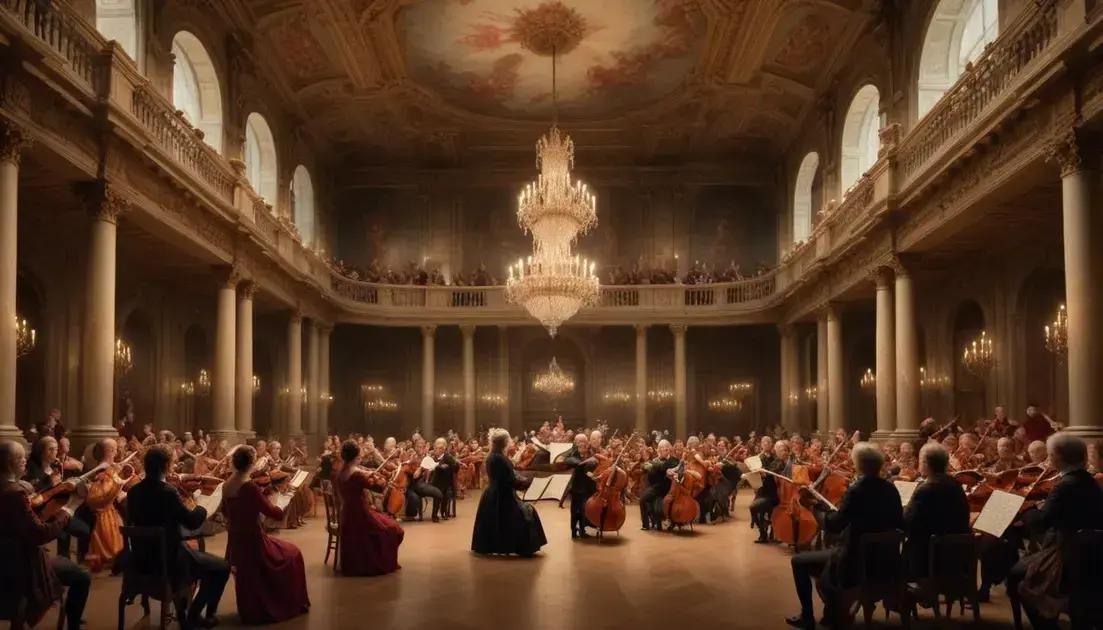
Impressionism: Light in Motion
Impressionism revolutionized the art world in the late 19th century, focusing on capturing light and color rather than realistic detail. Key artists like Claude Monet and Pierre-Auguste Renoir used quick brush strokes and vibrant colors to express emotions. This art movement inspired modern artists and influenced literature and music, emphasizing the beauty of everyday life and nature. Impressionism’s legacy continues today, impacting art education and fostering an appreciation for creativity across cultures.
Impressionism is not just an art movement; it’s a revolutionary way of seeing the world through light and color. Dive in to discover how artists like Monet changed our perception of beauty.
Understanding Impressionism
Impressionism is a unique art style that emerged in the late 19th century. Artists wanted to capture the momentary effects of light and color. Instead of painting perfect images, they focused on how things looked in a certain light.
The Basics of Impressionism
In an Impressionist painting, you’ll often see quick brush strokes and bright colors. This style helps to show movement and the feeling of a scene. Instead of detailed outlines, the images are more about the feeling they give.
Key Features
One key feature of Impressionism is the use of natural light. Artists painted en plein air, which means they created art outdoors. This way, they could capture the light changing throughout the day.
Another important aspect is color. Impressionists used vibrant colors straight from the tube rather than mixing them on a palette. This method made their paintings lively and full of energy.
Notable Artists
Famous Impressionist artists include Claude Monet, Pierre-Auguste Renoir, and Edgar Degas. Monet often painted the same scene at different times to show how light affected it. Renoir captured people enjoying life, while Degas focused on dancers and movement.
Through their unique styles, they changed how people viewed art. They encouraged others to see the beauty in everyday scenes.
The Impact of Impressionism
Impressionism opened the door for modern art movements. It broke free from traditional rules and inspired artists to explore new ideas. Today, Impressionism remains popular for its freshness and freedom of expression.
Key Artists
Impressionism features many talented artists who changed the art world forever. Their work introduced fresh ideas and new styles. Let’s explore some of these key artists.
Claude Monet
Claude Monet is perhaps the most famous Impressionist. He loved to paint light and color. His series of paintings like “Water Lilies” showed how the same scene can look different at different times of day.
Pierre-Auguste Renoir
Pierre-Auguste Renoir captured joyful moments in life. His paintings often focused on people enjoying themselves. Famous works like “Luncheon of the Boating Party” showcase lively colors and warm interactions.
Edgar Degas
Edgar Degas had a unique style. He focused on capturing movement in his art. Many of his paintings depict ballet dancers and scenes of everyday life. His use of unusual angles makes his work stand out.
Berthe Morisot
Berthe Morisot was one of the few female Impressionists. She painted intimate scenes of women and children. Morisot’s style was soft and fluid, capturing delicate emotions.
These artists and many others played a crucial role in shaping Impressionism. They broke from tradition and showed us a new way to see the world.
The Techniques of Light
Impressionist artists used unique techniques to capture light in their paintings. They wanted to show how light changes everything. Let’s explore some of these techniques.
Quick Brush Strokes
One of the main techniques is quick brush strokes. Artists applied paint quickly and boldly. This method helped create a sense of movement and vibrancy.
Color Mixing
Instead of blending colors smoothly, Impressionists placed colors side by side. This practice, called “optical mixing,” made the colors pop when viewed from a distance. It created a shimmering effect that drew the viewer’s eye.
Capturing Natural Light
Impressionists liked to paint outdoors. This allowed them to observe how natural light affects colors. They focused on the changing light during different times of the day. This helped them create lively and dynamic scenes.
Using Shadows
Shadows in Impressionist paintings aren’t just dark patches. They used color to show shadows. For example, instead of black, they might use blue or purple tones. This technique added depth and richness to their work.
By experimenting with these techniques, Impressionist artists changed the way we see light in art. Their work remains influential and inspiring today.
Cultural Impact
Impressionism had a huge cultural impact when it first appeared. It changed how people thought about art. Let’s look at some important effects it had on society and culture.
Breaking Art Norms
Before Impressionism, art was all about realistic representation. Impressionists challenged these old rules. They focused on light and color instead of perfection. This new approach opened doors for future artists.
Influencing Literature and Music
Impressionism didn’t just affect painting. It inspired writers and musicians, too. Authors like Marcel Proust captured the essence of fleeting moments in their stories. Composers like Claude Debussy created music that mirrored Impressionist art’s feelings.
Art Exhibitions and Community
Impressionist artists held their own exhibitions, creating a new way for artists to share their work. These events helped build a community among artists and art lovers. They became a place for fresh ideas and discussions.
Changing Views on Nature
The focus on nature and everyday life reshaped public perceptions. People began to appreciate the beauty in common scenes. Parks, gardens, and rivers became popular subjects in art. This shift encouraged outdoor activities and an appreciation for nature.
Overall, Impressionism influenced not just art, but society as a whole. Its legacy continues to inspire creativity today.
Legacy of Impressionism
The legacy of Impressionism remains strong in the art world today. It opened new paths for artists and changed how we understand art. Let’s explore its lasting impact.
Inspiration for Modern Artists
Impressionism inspires artists even now. Many contemporary artists use similar techniques. They focus on light, color, and emotions rather than just perfect forms.
Impact on Future Movements
Impressionism laid the groundwork for various art movements. Styles like Post-Impressionism, Fauvism, and Abstract art all drew from its ideas. These movements further expanded how artists express themselves.
Art Education and Appreciation
Impressionism changed art education. Schools now emphasize creative expression. Students learn to explore their ideas rather than just copy traditional techniques.
Global Recognition
Impressionism has gained worldwide recognition. Museums showcase its works, allowing people everywhere to appreciate its beauty. The movement’s influence spreads across cultures and generations.
Through these contributions, Impressionism continues to shape the art world. Its ideas encourage us to see the beauty in life’s fleeting moments.
Conclusion
In conclusion, Impressionism has left a lasting mark on the art world. This movement changed how artists express themselves, focusing on light and emotion. It inspired many modern artists and future art movements.
By breaking traditional rules, Impressionism opened doors for creativity. It encourages us to see beauty in everyday moments. Museums worldwide celebrate its impact, making its influence reach every corner of the globe.
As we appreciate Impressionism today, we remember its role in shaping art. It continues to inspire new generations, ensuring its legacy will live on.


